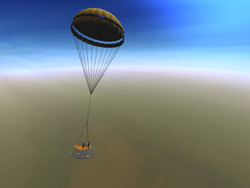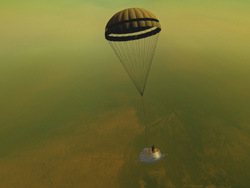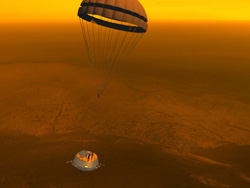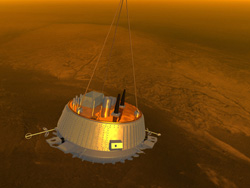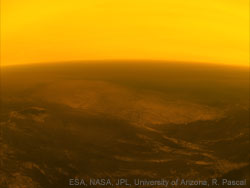 |
|
Rendered Views of Titan
|
|
|
|
The Mosaic of Titan's surface,
created from the raw images of the Huygens mission, is the basis for
these images rendered with POV-Ray. The viewpoint for the renderings
does not always represent a point on Huygens real trajectory.
The atmosphere of Titan was modeled according to the properties that
were already known prior to
the Huygens mission. I put some effort into creating a realistic
atmosphere, but I don't claim these views to be
absolutely correct.
|
|
|
|
|
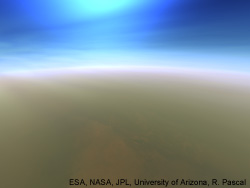
|
|
110
km above the surface of Titan
The
haze of Titans atmosphere preferently scatters blue and ultraviolet
light. This is the reason why the outer atmosphere of Titan appears
blue in some Cassini images. In reality, the effect of a blue outer
atmosphere on Titan may be less prominent than on this rendered image.
This was the altitude were the main parachute was jettisoned and first
surface structures came into view for Huygen's cameras.
|
 |
| Published
in Le Figaro Magazine July 23, 2005 |
|
|
|
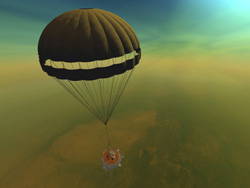 |
|
Huygens
hanging 90 km above the surface of Titan
The
true color of Titans sky at this altitude is expected to be slighly
less vivid than in this rendering, but should nevertheless come close
to it.The transparency of the atmosphere would also be slightly lower
to the naked eye. |
|
|
|
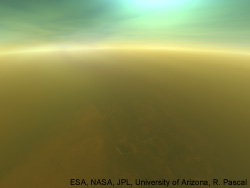
|
|
90
km above the surface of Titan
The
blue color of the sky slowly vanishes with decreasing distance to the
surface and is replaced by a brownish tint. Huygens is still above a
layer of complex organic condensate haze, that prevents a clear view
down to the surface.
|
|
|
|
|
|
|
|
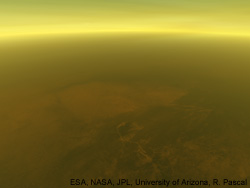
|
|
70
km above the surface of Titan
At
an altitude of 70 km above the surface, Huygens is inside the layer of
complex organic condensate haze. Below that layer, the view becomes
clearer. |
 |
| Published
in Le Figaro Magazine July 23, 2005 |
|
|
|
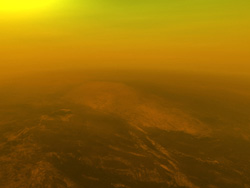
|
|
At
an altitude of 40
km
This
view represents Adiri as seen from an
altitude of 40km, but with the sun in the west. |
|
|
|
|
|
|
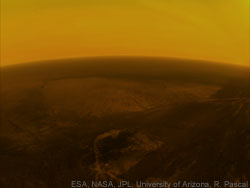
|
|
25
km above the surface of Titan
The
altitude, where Huygens view of the surface became distinctly clearer,
was surprisingly low with respect to the atmosphere model.
About 10% of the sunlight that is present at the outer atmosphere of
Titan reaches the surface at the end. |
|
|
|
|
|
|
|
|
|
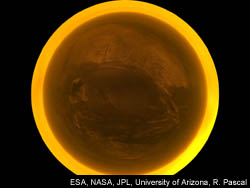
|
|
Fisheye
view of Titan
This
view shows the descend area of Titan, as if it was imaged with a
190° fisheye camera lens from approximately 20km above the landing
site.
|
 |
| Published
in Le Figaro Magazine July 23, 2005 |
|
|
|

